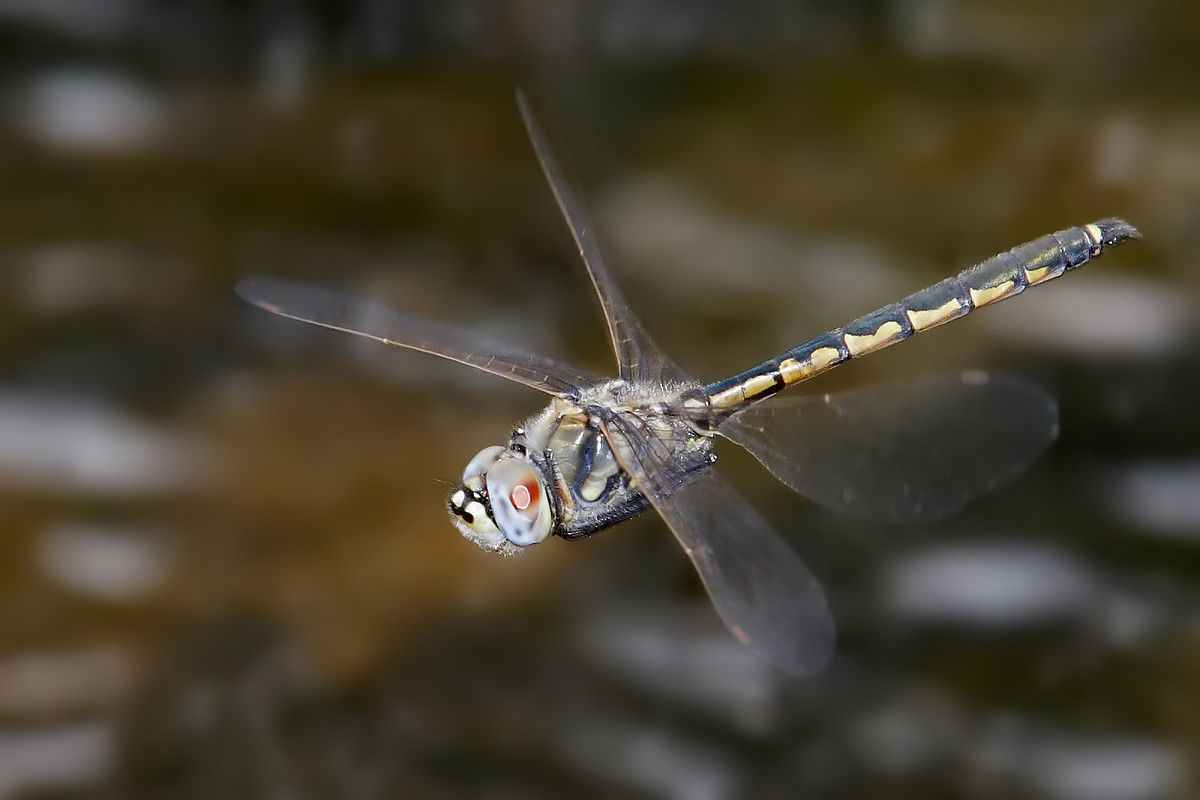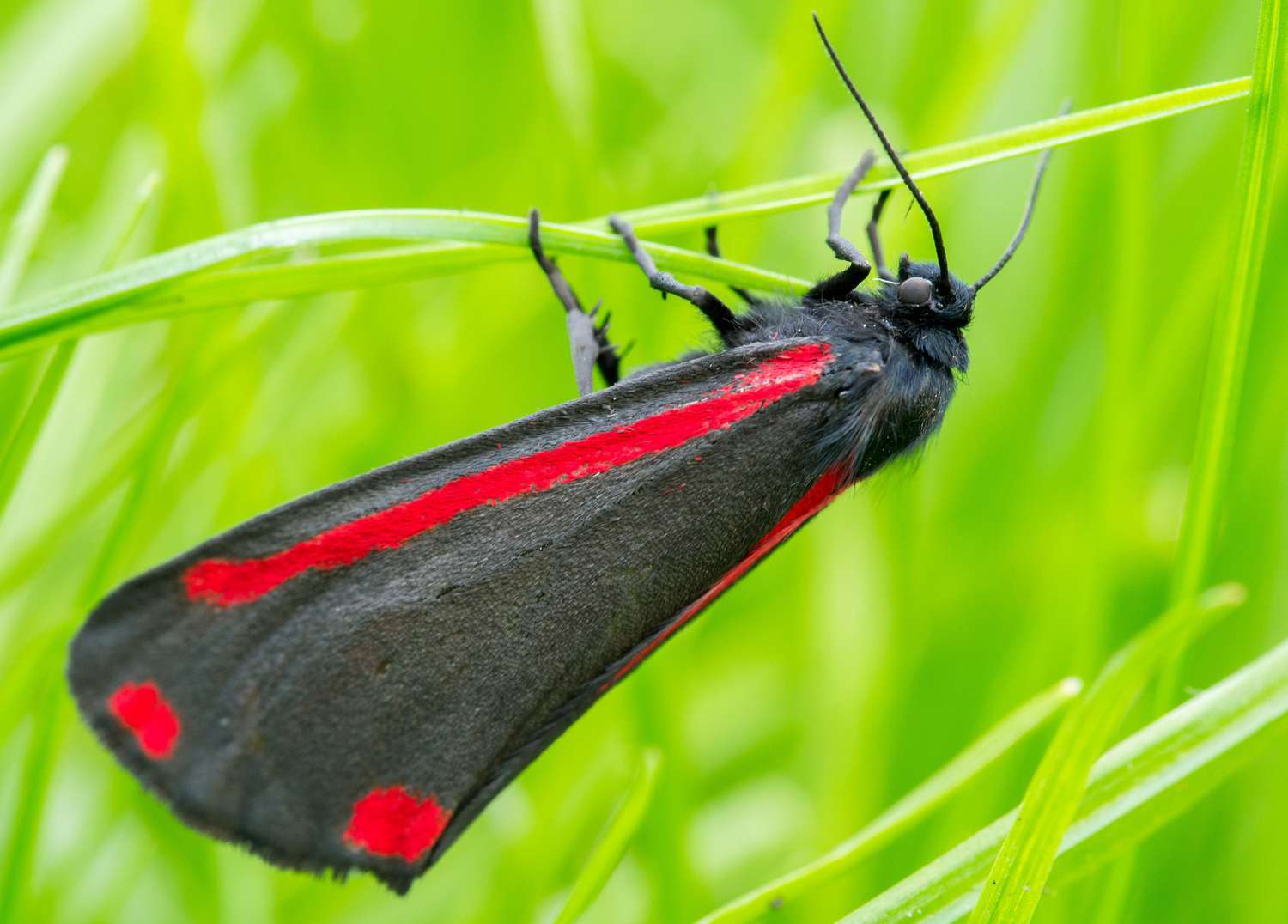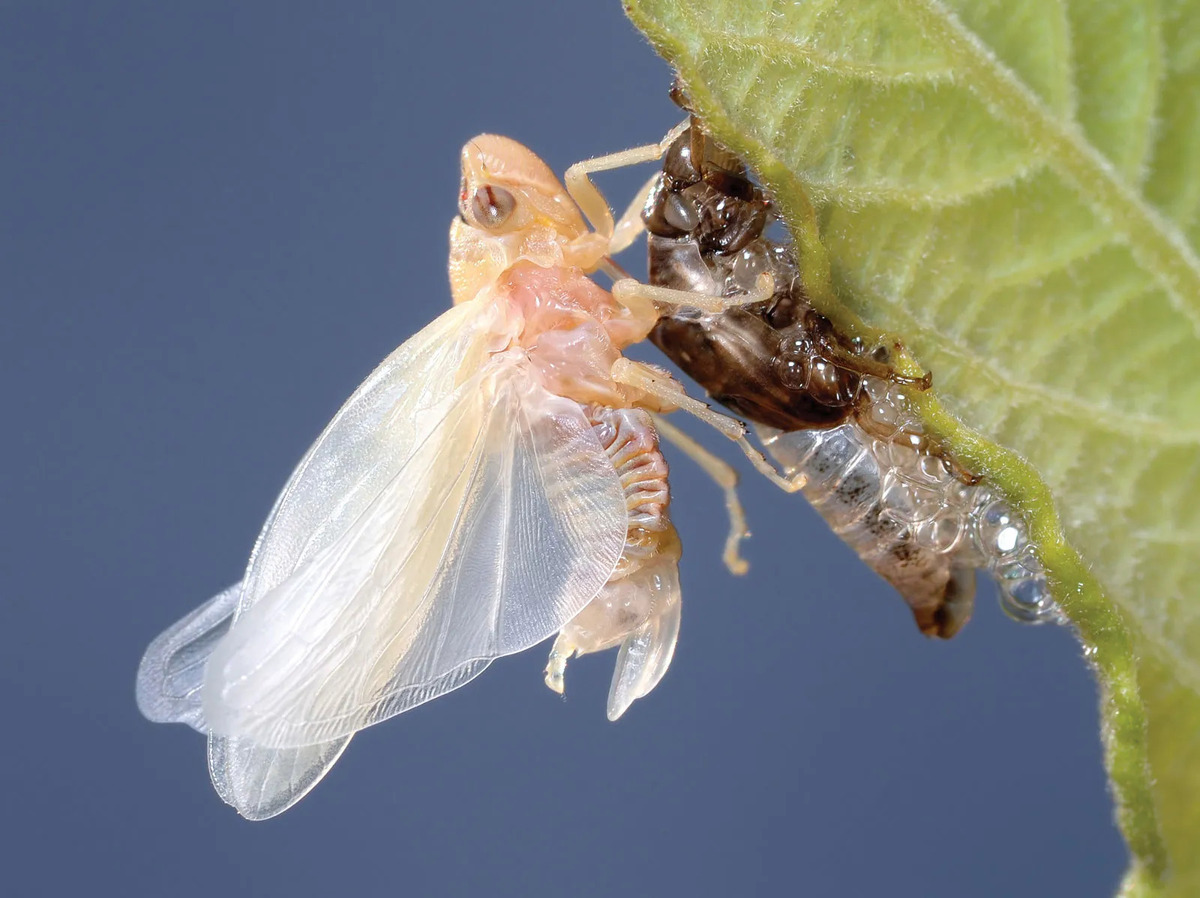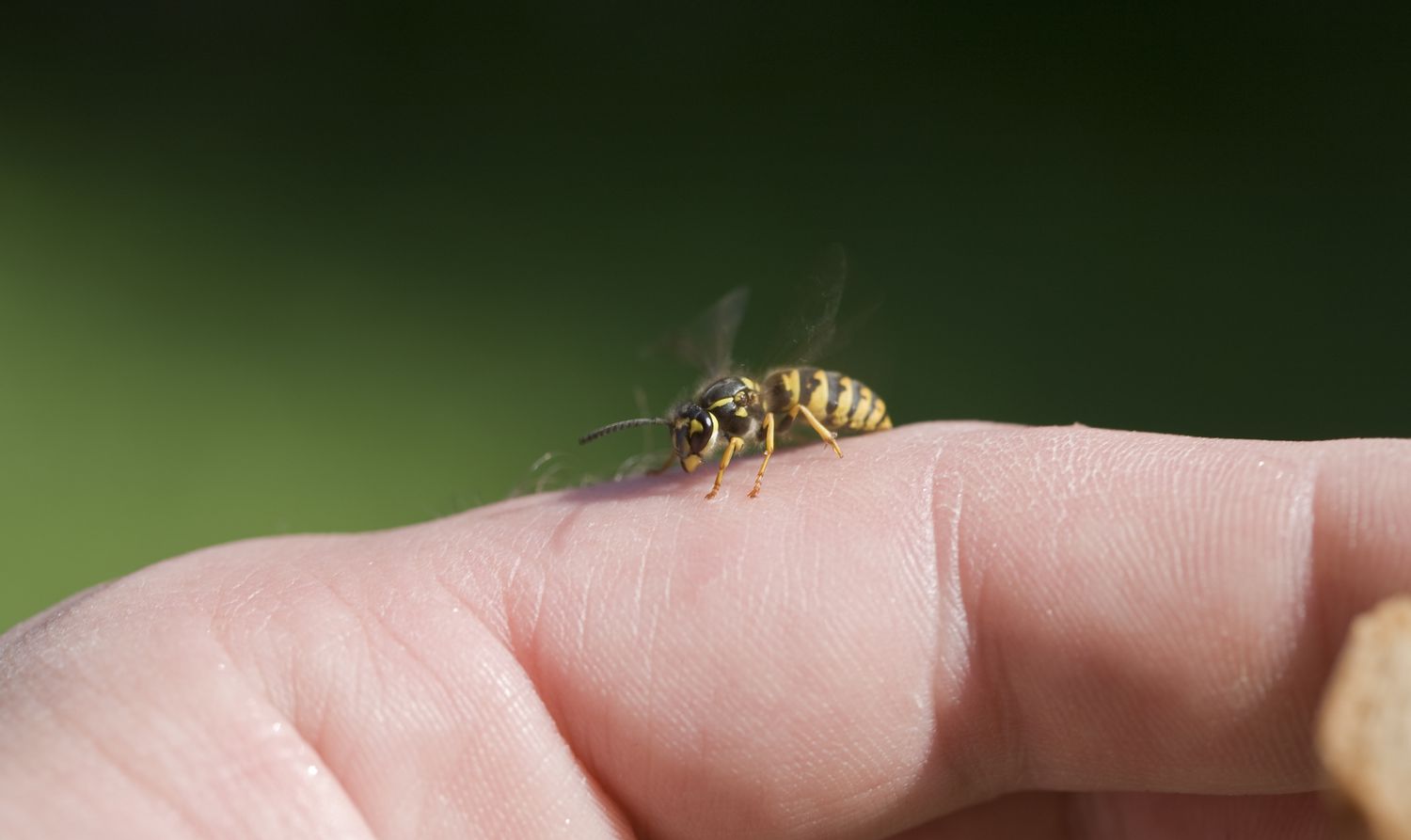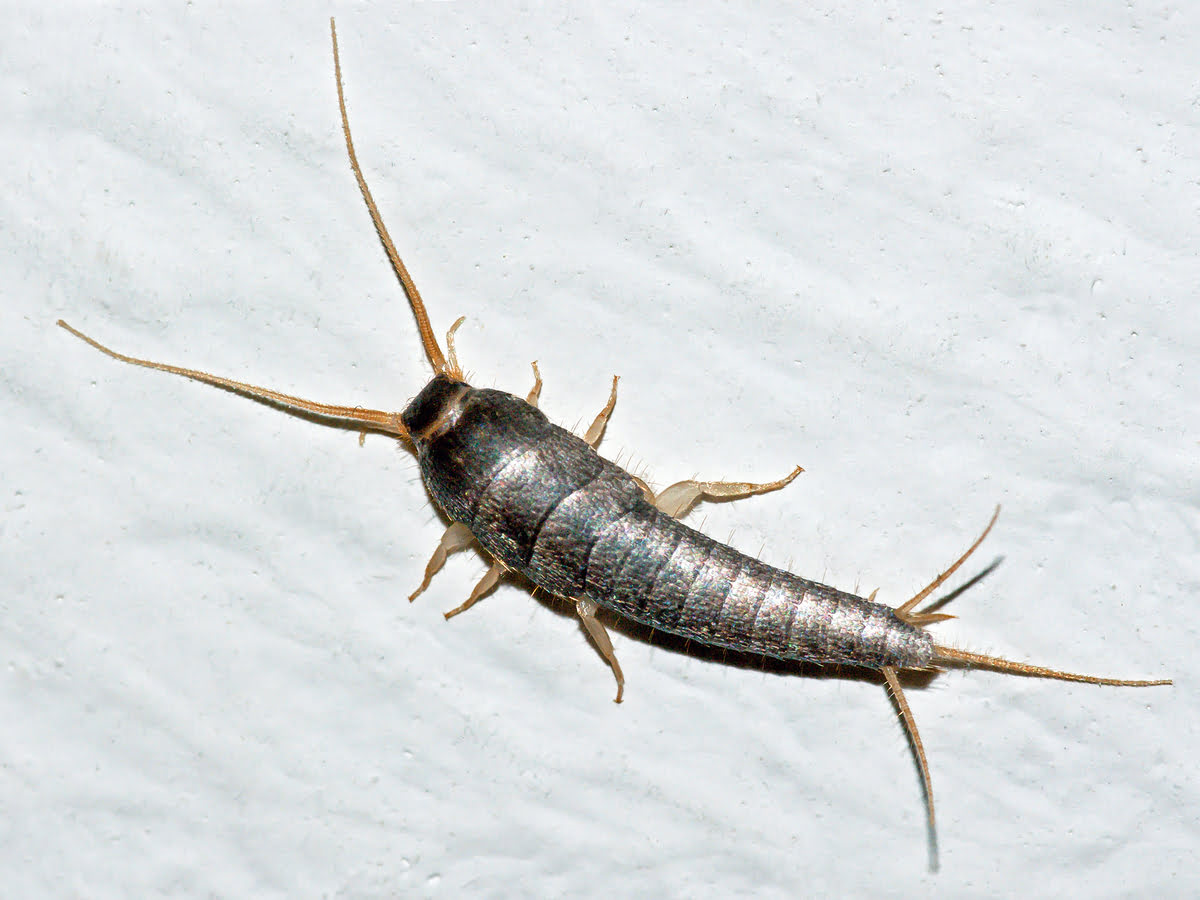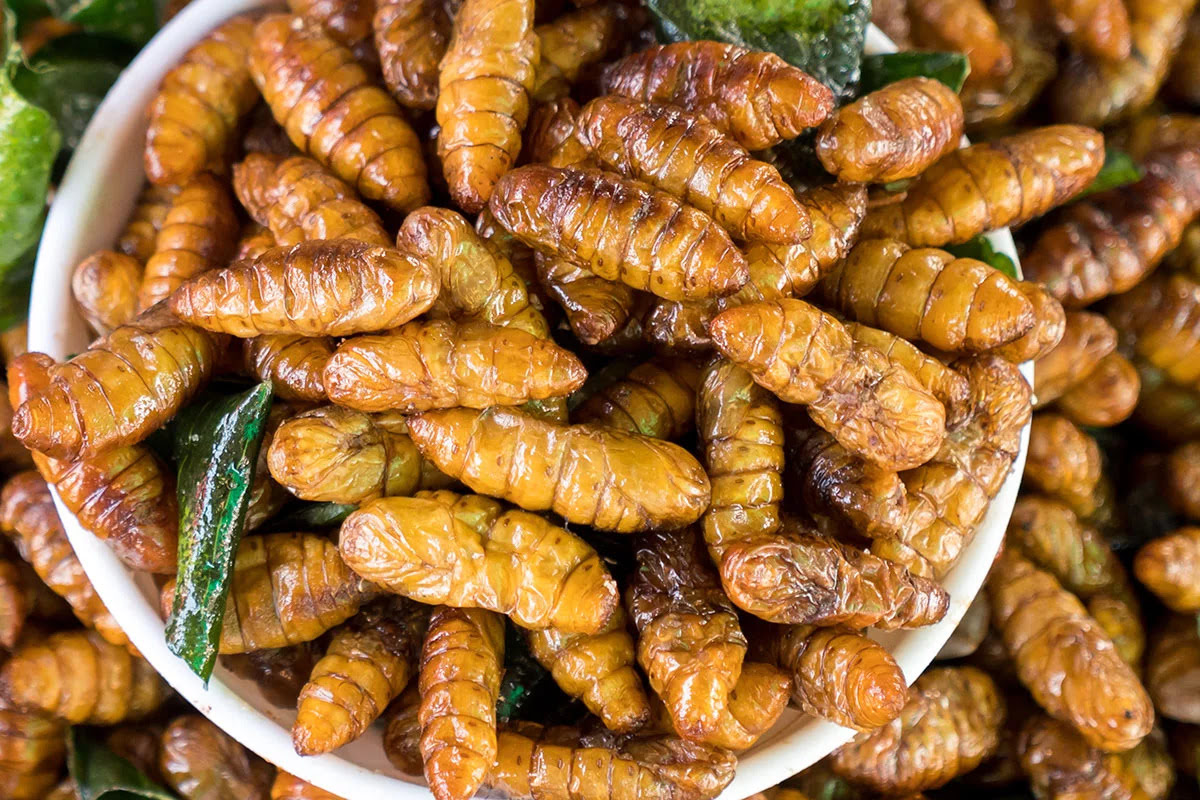Home>Gardening News and Trends>Gardening Trends>What Insects Destroy Crops
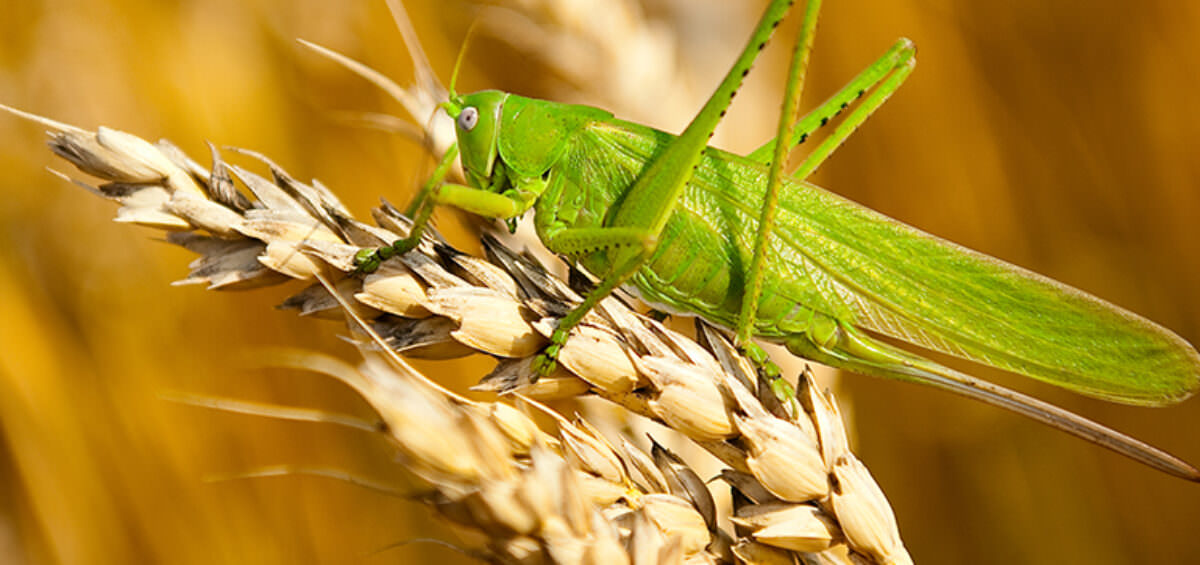

Gardening Trends
What Insects Destroy Crops
Modified: January 22, 2024
Discover the latest gardening trends and learn how to protect your crops from destructive insects, with expert tips and advice.
(Many of the links in this article redirect to a specific reviewed product. Your purchase of these products through affiliate links helps to generate commission for Chicagolandgardening.com, at no extra cost. Learn more)
Table of Contents
Introduction
Gardening is a rewarding and fulfilling hobby that brings joy to millions of people around the world. Whether you have a spacious backyard or a small apartment balcony, gardening allows you to connect with nature and grow your own plants, fruits, and vegetables. However, like any other activity, gardening is not without its challenges. One of the biggest challenges that gardeners face is dealing with crop-destroying insects.
Crop-destroying insects, also known as agricultural pests, can wreak havoc on your carefully nurtured plants and crops. These insects feed on the leaves, stems, fruits, and roots of plants, causing significant damage and reducing yields. Identifying and effectively managing these pests is crucial for maintaining a thriving garden.
There are several types of crop-destroying insects that gardeners should be aware of. Some insects, such as aphids and caterpillars, feed on the leaves of plants, while others, like beetles and weevils, attack fruits and vegetables. Knowing the different types of pests and their specific feeding habits is essential for implementing effective control strategies.
In this article, we will explore the various types of crop-destroying insects that gardeners encounter, the effects of insect damage on crops, and the methods available for prevention and control. We will also discuss the use of chemical pesticides and organic alternatives for insect control, as well as the concept of integrated pest management. Lastly, we will examine the economic impacts of crop damage and the importance of protecting our crops against these destructive pests.
Types of Crop-Destroying Insects
Crop-destroying insects come in a wide range of species, each with its own feeding habits and preferred plants to infest. Understanding the different types of crop-destroying insects is essential for effective pest management. Here are some common types of agricultural pests:
- Aphids: These small, soft-bodied insects are notorious for attacking a variety of plants. They suck the sap from leaves, causing them to curl, yellow, and eventually die. Aphids reproduce rapidly, leading to infestations that can quickly damage crops.
- Caterpillars: Caterpillars, the larval stage of butterflies and moths, are known for their voracious appetites. They feed on the leaves of plants, leaving behind chewed and ragged foliage. Some common caterpillar pests include cabbage worms, tomato hornworms, and corn earworms.
- Beetles: Beetles such as Colorado potato beetles, cucumber beetles, and Japanese beetles are major crop pests. They chew on the leaves, flowers, and fruits of plants. The damage caused by beetles can lead to reduced crop yields and even complete plant loss.
- Weevils: Weevils are small, hard-shelled beetles that target a variety of crops, including grains, fruits, and vegetables. They feed on plant foliage, stems, and roots, often causing stunted growth and reduced yield.
- Whiteflies: These tiny, white insects are commonly found on the undersides of leaves. They suck the sap from plants, leading to wilting, yellowing, and the transmission of plant viruses. Whiteflies are particularly problematic in greenhouse settings.
- Thrips: Thrips are slender insects that feed on the sap of plants, causing discoloration, distorted growth, and premature leaf drop. They are common pests in fruits, ornamental flowers, and vegetables.
- Spider Mites: Spider mites are tiny arachnids that feed on plant sap, leaving behind a telltale webbing on the leaves. They can quickly reproduce and infest an entire plant, leading to yellowing, wilting, and stunted growth.
- Slugs and Snails: These slimy creatures are nocturnal pests that feed on the leaves and fruits of plants. They leave behind silvery slime trails and chew irregular holes in the foliage. Slugs and snails can be particularly damaging in moist and shaded areas of the garden.
- Wireworms: Wireworms are the larvae of click beetles and are known for their long, slender shape. They feed on the roots and underground stems of plants, leading to poor growth and wilting. They are a common problem in potato and carrot crops.
These are just a few examples of the numerous crop-destroying insects that gardeners may encounter. It’s important to identify and monitor for these pests to minimize the damage they can cause to your beloved garden.
Common Agricultural Pests
Agricultural pests are a persistent threat to crops and can cause significant damage if not properly controlled. It is essential for gardeners and farmers to be familiar with these pests in order to effectively mitigate their impact. Here are some of the most common agricultural pests:
- Cabbage Worms: These green caterpillars are a common pest in cabbage, broccoli, and other cruciferous vegetables. They feed on the leaves, leaving behind chewed foliage and causing reduced plant vigor.
- Corn Earworms: Also known as the tomato fruitworm, these pale green caterpillars infest corn, tomatoes, and other crops. They bore into the ears of corn or the fruits of tomatoes, causing extensive damage and making them unsuitable for consumption.
- Cucumber Beetles: These small, striped beetles attack cucumber, melon, and squash plants. They feed on the leaves, stems, and flowers, and can also spread bacterial wilt disease.
- Cutworms: Cutworms are caterpillars that cut off young plants at the soil level. They are most active during the night and can inflict severe damage on newly transplanted seedlings.
- Aphids: Aphids are small, soft-bodied insects that can quickly multiply and infest a wide range of plants. They pierce the plant tissues and suck sap, causing curling, yellowing, and stunted growth. Aphids secrete a sticky substance known as honeydew, which can lead to the growth of black sooty mold.
- Japanese Beetles: These metallic green beetles are known for their voracious appetite and can damage a wide variety of plants, including roses, grapes, and fruit trees. They skeletonize leaves, leaving only veins, and can quickly defoliate entire plants.
- Squash Bugs: These flat, shield-shaped bugs infest squash, pumpkins, and other cucurbits. They feed on plant sap, causing wilting, yellowing, and ultimately plant death if left untreated.
- Spider Mites: Spider mites are tiny pests that are often difficult to see with the naked eye. They suck sap from the undersides of leaves, causing stippling, discoloration, and eventually leaf drop.
- Tomato Hornworms: These large, green caterpillars are common pests in tomato plants. They can strip entire branches of leaves and fruits, causing extensive plant damage.
- Whiteflies: Whiteflies are small, winged insects that congregate on the undersides of leaves. They suck sap from plants, leading to wilting, yellowing, and the transmission of plant viruses.
These are just a few examples of the pests that gardeners and farmers often encounter. It is important to monitor for these pests regularly and implement appropriate control measures to protect crops and ensure bountiful harvests.
Effects of Insect Damage on Crops
Insect damage on crops can have profound effects on plant health, productivity, and overall yield. The impact can vary depending on the type of pest, the stage of infestation, and the susceptibility of the crop. Here are some of the effects of insect damage on crops:
- Reduced Yield: Crop-destroying insects can significantly reduce the yield of plants by feeding on leaves, stems, flowers, and fruits. This can result in smaller or misshapen produce, fewer flowers or fruits, and overall reduced productivity.
- Plant Stunting: Insects that feed on the roots or stems of plants can cause stunting and poor growth. This can lead to smaller plants that are more susceptible to further insect damage, diseases, and environmental stress.
- Leaf Loss: Certain pests, such as caterpillars and beetles, can strip plants of their leaves, leaving them defoliated. This adversely affects photosynthesis, reducing the plant’s ability to produce energy and limiting its overall growth and productivity.
- Transmission of Diseases: Some insect pests act as vectors for plant diseases. They can transmit viruses, bacteria, and fungi from infected plants to healthy plants, leading to further damage and potentially crop loss.
- Quality Degradation: Insect damage can negatively impact the quality of the harvested produce. For example, feeding marks, punctures, or deformities caused by pests can render fruits and vegetables unmarketable, leading to financial losses for farmers and gardeners.
- Secondary Infestations: Insect damage weakens plants, making them more susceptible to secondary infestations by other pests. This can create a domino effect, with multiple insect pests attacking the already compromised plants, further exacerbating crop damage.
- Disruption of Plant Physiology: Insect feeding can disrupt the normal physiological processes of plants. For example, aphids and whiteflies suck sap from plants, depriving them of essential nutrients and causing wilting, yellowing, and distortion of leaves and stems.
- Ecological Imbalance: Large-scale damage caused by crop-destroying insects can disrupt the ecological balance in agricultural ecosystems. This can lead to a decline in beneficial insect populations, such as pollinators and natural predators, further complicating pest management efforts.
It is crucial for gardeners, farmers, and researchers to understand the effects of insect damage on crops to develop effective strategies for pest prevention and control. By implementing appropriate measures, such as early detection, integrated pest management, and sustainable agricultural practices, the impact of insect damage can be minimized, leading to healthier and more productive crops.
Prevention and Control Methods
Preventing and controlling crop-destroying insects is essential for the success of any gardening or farming endeavor. While complete eradication of pests may not always be possible, implementing effective prevention and control methods can significantly reduce their impact. Here are some strategies to consider:
- Cultural Practices: Implementing proper cultural practices can help prevent and minimize insect infestations. These practices include crop rotation, which involves planting different crops in successive years to disrupt insect life cycles. Additionally, cleaning up garden debris and practicing good sanitation by removing and properly disposing of infested plants can help reduce overwintering sites for insects.
- Physical Barriers: Using physical barriers, such as floating row covers or fine mesh netting, can prevent insects from reaching plants. These barriers act as a physical barrier, preventing adult insects from laying eggs on the plants and keeping pests away.
- Biological Control: Encouraging natural predators of crop-destroying insects can be an effective control method. Introducing beneficial insects, such as ladybugs, lacewings, and parasitic wasps, can help control pest populations naturally. Additionally, creating a habitat that attracts beneficial insects, such as providing flowering plants or installing insect hotels, can help promote their presence in your garden.
- Organic Insecticides: Organic insecticides derived from natural sources, such as neem oil or insecticidal soaps, can be effective in controlling certain pests. These products are less harmful to the environment and can be used as an alternative to chemical pesticides.
- Chemical Pesticides: In situations where severe pest infestations occur, chemical pesticides may be necessary. It is important to carefully read and follow label instructions when using chemical pesticides. Opt for selective pesticides that target specific pests, reducing the impact on beneficial insects and the environment. Integrated Pest Management (IPM) techniques should be employed, such as accurately identifying the pest, using the appropriate dosage, and adhering to proper timing of application.
- Trap Crops: Planting trap crops, which are sacrificial plants that are more attractive to pests, can help divert insects away from the main crop. This can reduce insect damage on the desired plants and prevent infestations from spreading.
- Monitoring and Early Detection: Regularly inspecting plants for signs of insect damage and monitoring pest populations is crucial. Implementing sticky traps, pheromone traps, or using visual observations can help identify pest outbreaks early on. Swift action can then be taken to prevent further damage.
- Chemical-Free Pest Management: Using alternative methods such as handpicking pests, applying organic insecticides, or creating homemade pest repellents can help control insect populations without the use of chemical pesticides.
Implementing a combination of these prevention and control methods, tailored to the specific pests and crops in your garden, can help minimize the detrimental effects of crop-destroying insects. It is important to regularly assess the effectiveness of these strategies and make adjustments as needed to ensure long-term success in maintaining healthy and thriving plants.
Chemical Pesticides for Crop Protection
Chemical pesticides are widely used in agriculture to protect crops from the devastating effects of insect pests. These pesticides contain active ingredients that target specific pests and disrupt their normal physiological processes. While there are concerns about their potential environmental and health impacts, when used responsibly and according to label instructions, chemical pesticides can be an effective tool in crop protection. Here are some key points to consider regarding chemical pesticides:
- Wide Range of Formulations: Chemical pesticides are available in various formulations, including liquids, powders, granules, and aerosols. This allows for flexibility in application methods, depending on the type of pest and the target crop.
- Specific Pest Control: Chemical pesticides are designed to target specific pests, which helps minimize the impact on non-target organisms, including beneficial insects. Selective pesticides can be used to control specific pest species while sparing other organisms from harm.
- Effective and Immediate Results: Chemical pesticides often provide rapid control of pests, allowing for immediate results. This can be beneficial in situations where pest infestations are severe and immediate intervention is necessary to prevent extensive damage.
- Integrated Pest Management (IPM): The use of chemical pesticides should be part of an integrated pest management approach, which combines various pest control methods to achieve sustainable control. IPM involves accurately identifying pests, monitoring populations, and using chemical pesticides as a last resort when other methods are ineffective or impractical.
- Responsible Use: It is crucial to follow label instructions and guidelines for the appropriate application of chemical pesticides. This includes using the recommended dosage, applying pesticides during the recommended time and weather conditions, and taking appropriate safety precautions to protect yourself, others, and the environment.
- Environmental Considerations: Appropriate use of chemical pesticides involves considering their potential environmental impact. Pesticides should be selected based on their toxicity to non-target organisms, persistence in the environment, and potential for runoff into water sources. Additionally, adherence to buffer zones and restrictions can help minimize the risk of pesticide drift and contamination.
- Regulations and Safety: It is important to comply with local regulations and guidelines related to pesticide use. These regulations are in place to protect human health, the environment, and to ensure the safe handling, storage, and disposal of chemical pesticides.
- Alternatives and Reduction: While chemical pesticides can be effective, it is advisable to explore alternative pest control methods and use chemical pesticides as a last resort. Integrated pest management, cultural practices, and biological controls can help reduce reliance on chemical pesticides and promote sustainable pest management.
- Educational Resources: Stay informed about the latest developments in pesticide technology and best practices for their use. Consult with local agricultural extension services, attend workshops, and access educational resources to ensure responsible and effective use of chemical pesticides.
Chemical pesticides have played a significant role in crop protection, but their use should be balanced with considerations for human health, environmental impact, and long-term sustainability. It is important to use chemical pesticides as part of a comprehensive pest management strategy that includes alternative control methods, monitoring, and responsible use to protect crops while minimizing harm to the environment and non-target organisms.
Organic Alternatives for Insect Control
For those who prefer a more natural and eco-friendly approach to insect control, organic alternatives offer effective methods for managing pests in the garden. These methods focus on maintaining a balance between pests and beneficial organisms while minimizing harm to the environment and human health. Here are some organic alternatives for insect control:
- Biological Control: Encouraging natural predators and beneficial insects can help keep pest populations in check. Ladybugs, lacewings, and parasitic wasps are examples of beneficial insects that feed on pests like aphids and caterpillars.
- Companion Planting: Interplanting pest-repellent plants with susceptible crops can help deter pests. For example, planting marigold flowers in vegetable gardens can help repel nematodes and certain insects through their natural scent and root secretions.
- Using Barriers: Physical barriers, such as floating row covers or netting, can prevent pests from reaching plants. These barriers act as a barrier, physically preventing pests from accessing the plants while still allowing sunlight, air, and water to pass through.
- Organic Insecticides: Organic insecticides derived from natural sources, such as neem oil, insecticidal soaps, and pyrethrin, can be used to effectively control insect pests. These products are considered low-toxicity and are approved for organic gardening.
- Insecticidal Soaps and Oils: Insecticidal soaps and oils are derived from natural sources and are effective against soft-bodied insects like aphids, whiteflies, and spider mites. They work by disrupting the insect’s cellular membranes and suffocating them.
- Organic Dusts and Powders: Diatomaceous earth and kaolin clay are examples of organic dust and powder insecticides. These substances work by physically damaging the exoskeleton of pests, causing dehydration and death.
- Organic Repellents: Certain plants and natural products can act as repellents against specific pests. For example, planting garlic, onions, or chives can deter some insects, while using essential oils like peppermint or citronella can repel mosquitoes and other flying insects.
- Beneficial Nematodes: Beneficial nematodes, microscopic roundworms, can be applied to the soil to control soil-dwelling pests like grubs and larvae. They invade and kill the target pests, effectively reducing their populations.
- Homemade Remedies: Many homemade remedies can be used as organic insect control methods. Examples include creating homemade insecticidal sprays using ingredients like garlic, hot pepper, or dish soap. These remedies can be effective against a range of pests, but it’s important to test on a small area first and avoid harming beneficial insects.
By utilizing these organic alternatives for insect control, gardeners can effectively manage pests while minimizing the impact on the environment and promoting a healthier ecosystem. Remember, monitoring the garden regularly, proper plant maintenance, and early intervention are key to successful organic pest control.
Integrated Pest Management Strategies
Integrated Pest Management (IPM) is an effective and sustainable approach to managing pest populations in a holistic manner. It combines various pest control methods to minimize reliance on chemical pesticides and promote long-term pest management. Here are the key components of an integrated pest management strategy:
- Monitoring and Identification: Regular monitoring of plants is essential for early detection of pest infestations. This involves visually inspecting plants for signs of damage, using pheromone traps, sticky traps, or other monitoring techniques. Accurate identification of pests allows for the implementation of appropriate control measures.
- Prevention: Emphasizing preventive measures is an important aspect of IPM. It includes practices such as crop rotation, selecting pest-resistant plant varieties, and implementing proper sanitation to remove potential pest habitats and breeding grounds. Preventive measures aim to create an unfavorable environment for pests, reducing their ability to establish and spread.
- Cultural Control: Cultural practices play a significant role in IPM. These practices include proper spacing and pruning to promote airflow and reduce humidity, providing adequate nutrition and irrigation to plants, and removing weeds that serve as alternate hosts for pests.
- Biological Control: Encouraging natural enemies of pests is an integral part of IPM. This involves promoting beneficial insects, such as ladybugs, lacewings, and parasitic wasps, which prey on or parasitize pests. Using biological control agents, like nematodes or predatory mites, can also help manage specific pests.
- Chemical Control: Chemical pesticides are used as a last resort in IPM when other control methods are insufficient. When using chemicals, selective and low-toxicity options are preferred to minimize harm to beneficial insects and the environment. Care should be taken to follow label instructions and avoid unnecessary or excessive use.
- Integrated Control Tactics: IPM combines multiple control tactics for maximum effectiveness. This may involve combining cultural practices, biological control, and targeted chemical interventions, as needed, to achieve optimal pest management.
- Record Keeping and Evaluation: Keeping records of pest population levels, control methods used, and their effectiveness is crucial for evaluating the success of IPM strategies. This information helps in making informed decisions and adapting pest management approaches for future seasons.
- Educational Awareness: Education and awareness are key to successfully implementing IPM. Sharing knowledge about pest identification, control methods, and the benefits of IPM with growers, farmers, and home gardeners fosters a wider adoption of sustainable pest management practices.
- Continual Improvement: IPM is an ongoing process that requires regular assessment, adjustment, and improvement. As new and more sustainable pest management techniques emerge, it is important to adapt and integrate these methods into the IPM strategy for long-term effectiveness.
By employing an integrated approach to pest management, gardeners and farmers can effectively control pests while minimizing reliance on chemical pesticides and promoting a more eco-friendly and sustainable agricultural system.
Economic Impacts of Crop Damage
The economic impacts of crop damage caused by insects can be significant, affecting both individual farmers and the larger agricultural industry. Crop-destroying insects can cause direct and indirect losses, resulting in financial strain and reduced food availability. Here are some of the economic impacts of crop damage:
- Reduced Yields: Insect pests can significantly reduce crop yields by feeding on plants and damaging fruits, flowers, and foliage. This can result in fewer marketable products, leading to reduced revenue for farmers and increased food costs for consumers.
- Quality Decline: Insect damage can reduce the quality of harvested crops. Blemishes, deformities, and associated microbial contamination caused by pests can render the produce unsuitable for market, resulting in financial losses for farmers.
- Increased Production Costs: Farmers face higher production costs when they need to invest in pest control measures to mitigate damage. These costs include purchasing insecticides, implementing preventative practices, and hiring labor for pest monitoring and control activities.
- Crop Loss or Failure: Severe infestations can lead to complete crop failure or loss. This not only results in direct financial losses for farmers but also disrupts the supply chain, leading to limited availability and potentially higher prices for consumers.
- Market Disruptions: Crop damage caused by insects can lead to market disruptions and instability. When there is a shortage of a particular crop due to pest damage, prices can fluctuate, impacting both farmers and consumers. Additionally, exports may be affected if crop quality fails to meet international standards.
- Increased Reliance on Imports: Insect damage can force farmers to reduce their production or switch to alternative crops. This increased reliance on imported goods to meet market demands can lead to higher import costs and reduce domestic economic stability.
- Farm Losses and Bankruptcy: For many small-scale farmers, the financial impact of crop damage can be devastating. In extreme cases, repeated or severe damage from pests can lead to farm closures, bankruptcy, and loss of livelihood.
- Research and Development Expenses: The agriculture industry invests significant resources in research and development to address pest-related challenges. Developing new pest-resistant crop varieties, improved control methods, and sustainable pest management strategies incur additional costs that can impact overall agricultural productivity.
- Environmental Costs: The use of chemical pesticides to control pests can have negative environmental effects. Runoff from fields can contaminate water sources, harming aquatic ecosystems. In addition, the loss of natural habitats and wildlife due to pest control practices can impact ecosystem stability and biodiversity.
The economic impacts of crop damage caused by insects highlight the importance of effective pest management strategies and sustainable agricultural practices. Investing in research, adopting integrated pest management approaches, and promoting education and awareness can help minimize the economic losses associated with crop damage while ensuring food security and economic stability in the agricultural sector.
Conclusion
Crop-destroying insects pose a significant challenge to gardeners, farmers, and the agricultural industry as a whole. The effects of insect damage on crops can be detrimental, leading to reduced yields, compromised product quality, increased production costs, and economic instability. However, by adopting effective pest management strategies, it is possible to minimize these impacts and maintain healthy and productive crops.
Understanding the different types of crop-destroying insects and their specific feeding habits is crucial for implementing appropriate control methods. Integrated Pest Management (IPM) combines various approaches, such as monitoring, prevention, cultural controls, biological controls, and selective chemical interventions, to effectively manage pest populations while minimizing harm to beneficial organisms and the environment.
Additionally, organic alternatives for insect control offer a sustainable and eco-friendly approach to pest management. By utilizing biological controls, organic insecticides, companion planting, and other methods, gardeners can effectively manage pests while promoting a healthier ecosystem.
It is important to recognize the economic impacts of crop damage caused by insects. Reduced yields, increased production costs, market disruptions, and farm closures can have far-reaching consequences, affecting both farmers and consumers. By investing in research and development, promoting sustainable agricultural practices, and raising awareness about pest management, we can work towards mitigating these economic impacts.
In conclusion, by being proactive in our approach to pest control, implementing integrated pest management strategies, and fostering a balance between agricultural production and environmental stewardship, we can minimize the impact of crop-destroying insects. Protecting our crops not only ensures food security and economic stability but also contributes to a healthier and more sustainable future for all.
